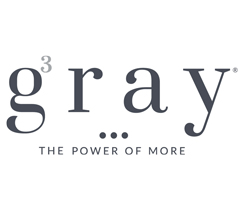API data from 2009 underscores alarming trend in propane sales
Domestic propane sales for residential, commercial, engine, farm and industrial uses fell another 3.5 percent to 9.6 billion gallons in 2009, according to the most recent report from the American Petroleum Institute (API).
That 345 million-gallon drop from 2008 concludes a decade that lost 2.5 billion gallons in sales since 2000. And, as we reported in the first of three stories examining the alarming trend in our March issue, preliminary data indicates a loss of another 300 million gallons in 2010.
The annual API report shows that 30 states had a drop in gallons from the preceding year. Six of the states ranked in the top 10 in total retail sales for 2009 were down, including top-ranked California. Sales in Texas fell for the fourth straight year, while Iowa had its third consecutive increase.
Here is how they finished:
1. California (559.1 million gallons, down 11.7% from 2008)
2. North Carolina (509.1 million, down 7.5%)
3. Michigan (492.6 million, down 5.5%)
4. Iowa (486.4 million, up 4.9%)
5. Illinois (483.7 million, down 2.2%)
6. Minnesota (440.9 million, up 9.0%)
7. Texas (375.9 million, down 13.6%)
8. Ohio (372.9 million, up 11.3%)
9. Wisconsin (369.0 million, down 7.5%)
10. Pennsylvania (362.4 million, up 4.9%)
States with the fewest number of retail gallons sold in 2009 were Rhode Island (16.7 million), Alaska (17.1 million), Hawaii (34.1 million), Utah (46.3 million) and West Virginia (48.5 million). Sales in Alaska and Hawaii were up from 2008.
The API report also ranks the states with the largest volume of propane sales in the residential, commercial and agricultural sectors. They were:
Residential Sector (Propane sold for use in households primarily for use in space heating, water heating and cooking. Also includes sales for RVs):
1. Michigan (398.9 million)
2. California (275.2 million)
3. Wisconsin (266.9 million)
4. Illinois (263.1 million)
5. North Carolina (241.1 million)
Commercial Sector (Propane sold for use in commercial establishments such as motels, churches, restaurants, retail stores and laundries primarily for use in space heating, water heating and cooking for commercial purposes):
1. California (86.6 million)
2. Florida (86.5 million)
3. North Carolina (81.9 million)
4. Pennsylvania (74.2 million)
5. Texas (74.1 million)
Agricultural Sector (Propane used in the production, harvesting and processing of agricultural products. Uses include heating buildings, controlling pests, powering agricultural equipment and drying or conditioning crops. Farm residential use is included in residential category.)
1. Iowa (190.5 million)
2. Minnesota (160.3 million)
3. Illinois (108.7 million)
4. North Carolina (83.4 million)
5. Indiana (67.4 million)
The API report comes at the same time the Energy Information Administration bumped its 2011 crude price forecast by $9 to $102 for the yearly average. The turmoil in Libya means no foreseeable letup in crude price premiums at the quarter pole of 2011. That, obviously, doesn’t bode well for propane prices down the road.
Crude-driven propane price spikes will push consumers to renew efforts to conserve and choose cheaper energy alternatives.
Propane already is losing its traditional cost advantage over electricity. Since 2000, residential propane price increases have outpaced electricity, increasing on average by 91 percent. Electricity prices rose just 41 percent in that same period. It’s a major reason why propane marketers have lost more than 1.3 million heating customers to electricity in the last decade.
Even our satisfied residential customers are reducing propane use through conservation and more efficient furnaces, appliances and home construction. Analysts say average consumption per customer fell by more than 15 percent – costing about 800 million gallons in sales – in the last decade. Those patterns won’t change.
The reality is the entire energy marketplace is churning in complex, unchartered ways. And nobody has the answers as we push through a new decade of economic, political and competitive challenges.
The smart players will adapt and find ways to capitalize on emerging opportunities. Others will merely wring their hands and continue to operate as in the past – hoping that lost gallons will magically return. They will not.
















